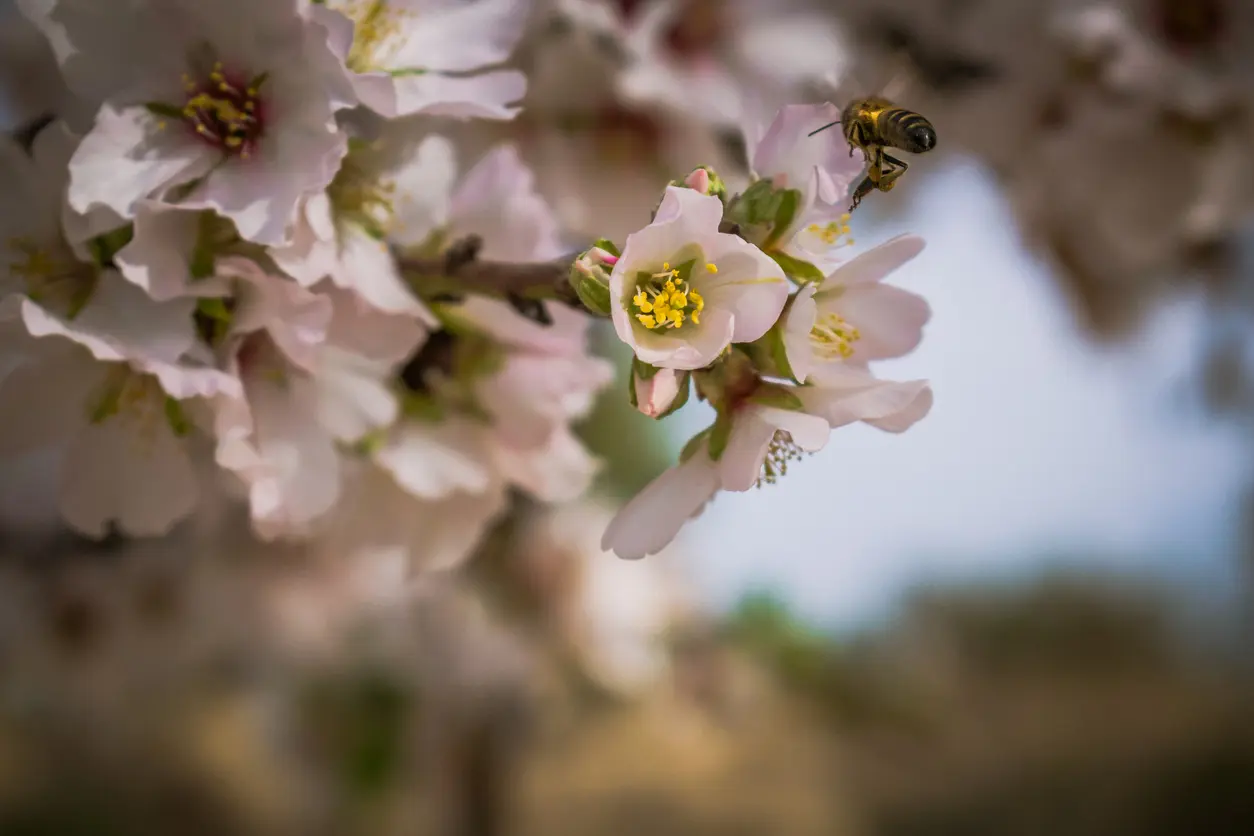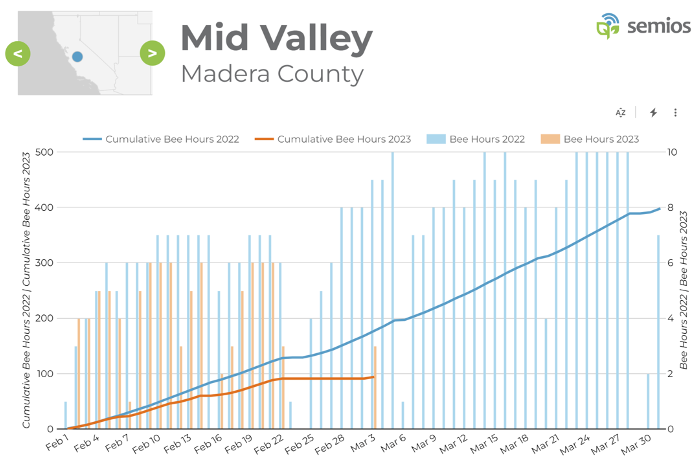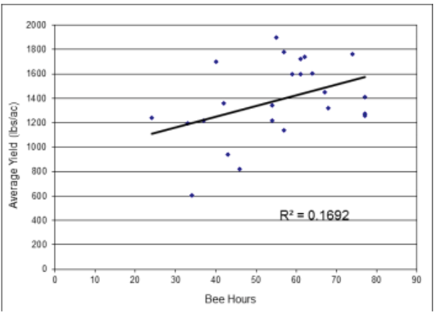
Bee Activity with Wet Conditions
A good bee hour is accumulated when:
- Temperature is warmer than 59OF
- Wind speeds are less than 10 mph
- Not raining
Minimal flight activity occurs when:
- Temperature is warmer than 55OF
- Wind speeds are less than 15 mph
- Not raining
An interesting and fun website to visit is the Semios’ California Bee Hours Dashboard.
Charts such as this can be accessed comparing current 2023 Bee Hour to 2022 Bee Hours data.

As can be seen, we are currently significantly behind 2022 Bee Hour accumulation, but how closely do Bee Hours and actual yield correlate? To help answer this question Joe Connell (UC Farm Advisor Emeritus, Butte County) compared the average yield in Butte County and bee hours in Butte County (Durham CIMIS station from 1% Sonora through 100% Mission bloom) from 1985-2011. See the figure below.

As can be seen in this regression analysis that there is a slight positive relationship between increasing bee hours and yield, but this relationship is a weak one. The R2 value 0.17 indicates that about 17% of the variation in yield can be explained by bee hours.
The full article can be read in its entirety here goes on to say that of the more important factors that better correlates to yield, particularly in a cold spring, is the number of frames in the hive covered with bees.
“Honey bees must maintain a sufficient hive temperature of 97OF to ensure brood survival, and do this by ‘shivering’ to product heat. In a 4-frame hive on a cool day, the vast majority of bees will be needed to generate heat, leaving few individuals to forage.
In an 8-frame hive on the same cool day, proportionally fewer bees are required to warm the brood, leaving the remainder of the colony to work out in the orchard. Bees from strong 8-frame hives will collect 2-3 times the amount of pollen from 4-frame hives.”
Finally, take bee hours as an interesting metric to ESTIMATE if bees SHOULD be flying, but it certainly is not the determining metric if bees will be flying and how effective they will be at pollinating almond bloom.

